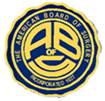Gynecomastia Surgery Revision: There is Hope
Posted on Monday, June 30th, 2014 by Dr. Babak Dadvand
With any surgery, there is always a risk of needing revision surgery. As an expert in gynecomastia surgery, I see patients in consultation who have had their surgery elsewhere and are not happy with their results. Typically, patients needing revision fall into two categories: over-resection and under-resection. Both types of patients have different challenges but by far the more difficult revision procedure is in those patients who have been over resected.
The under-resected patient is unhappy because he feels that he still has fullness in his chest. After going through the surgery, the cost, and the recovery this can be extremely disappointing and upsetting that the patient has to go through the entire process again. It is important to determine whether the fullness is due to excess breast or fatty tissue that was not removed at the original operation or whether it is the development of scar tissue that gives the appearance and feel of glandular tissue. Either way, these patients likely will need another surgery to address the issue.
The patient below represents a case of under-resection by another surgeon that was corrected by Dr. Dadvand. Notice the fullness that still remains in his chest.
The over- resected patient poses a more difficult challenge mainly because they usually have contour abnormalities. They will likely have dents, tethering of the areolas to the muscle, and flexion deformities (i.e. when they flex their pecs the overlying skin or areola caves in). These patients may also be under-resected in other areas of their chest which will make the over resected area much more pronounced. Typically the only options for these patients, aside from silicone implants (which have their own risks), are fat grafting or fat flaps. Fat flaps, which refers to rotating the fat from an adjacent area of the chest to the dented area without separating the fat can only work if there is enough fat to rotate. Free fat grafts involve harvesting fat from another body part (abdomen or flanks) and injecting it into the dented areas. This may help but it is unpredictable how much fat will survive. This is because fat grafts need blood supply to survive and the dented area usually has scar tissue with unpredictable blood supply. Other issues in over-resected patients are inverted nipples and tethered scars. These are more easily corrected than severe dents.
The patient below represents a case of over-resection by another surgeon and the corrective surgery performed by Dr. Dadvand. Notice the severe dents involving the areola and the hollowness on the outer aspects of each chest which was corrected by Dr. Dadvand.
To learn more about gynecomastia and to view before and after photos, visit drdadvandplasticsurgery.com.
This entry was posted in Breast Revision, Breast Surgery, Gynecomastia, Plastic Surgeon, Plastic Surgery, Scars. Bookmark the permalink.








 4.9 stars - based on 106 reviews
4.9 stars - based on 106 reviews
 4.9 stars - based on 73 reviews
4.9 stars - based on 73 reviews
